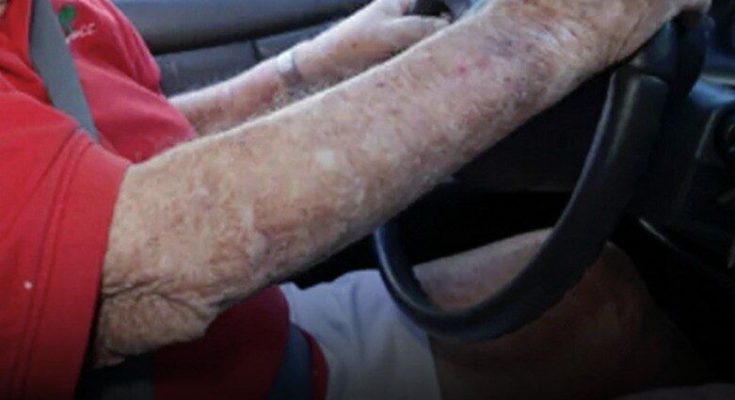As populations age, the question of senior driving safety becomes more pressing. Many older adults rely on their vehicles for independence, but as reflexes slow and vision declines, the issue of when — or if — to restrict driving becomes complex. Should elderly drivers be required to retake driving tests or undergo regular medical evaluations? It’s a sensitive topic that touches on freedom, dignity, and public safety.
Age alone doesn’t determine driving ability. There are 80-year-olds who handle the road with sharpness and care, and 40-year-olds who drive distractedly every day. But the aging process naturally affects physical and cognitive performance — slower reflexes, reduced vision, limited hearing, and decreased coordination. The challenge lies in balancing personal independence with the responsibility to ensure the safety of everyone on the road.
A tragic incident in La Rochelle reignited debate across France. An 83-year-old driver traveling in the wrong direction collided with a group of children on bicycles. Several were injured, sparking outrage and difficult questions: When does age begin to compromise driving safety? And how can society intervene compassionately before tragedy strikes?
According to the French Road Safety Authority, drivers over 75 are involved in car accidents at roughly the same rate as drivers aged 18 to 24 — a statistic that surprises many. While the young tend to cause accidents through inexperience or risk-taking, older drivers often struggle with reaction time, declining perception, and delayed decision-making. These issues, subtle at first, can become life-threatening in fast-moving traffic conditions.
Despite these risks, France does not currently impose an upper age limit for driving. A standard B-class driving license remains valid for life, unless it is revoked following a major infraction or medical ruling. In other words, French law trusts elderly drivers to self-regulate their abilities — a stark contrast to other European countries like Italy and Germany, where drivers over 70 must undergo medical evaluations to maintain their licenses.
This raises an important philosophical question: Is driving a right or a privilege? For many older adults, it’s not just transportation — it’s autonomy, self-respect, and social connection. Losing the ability to drive can mean isolation, dependence, and loss of purpose. That’s why the goal isn’t to take keys away, but to keep seniors driving safely for as long as possible.
Experts argue that a smarter, more balanced approach could protect both independence and safety. Voluntary medical checkups are a good start. Elderly drivers can consult licensed physicians for assessments that include eyesight tests, reflex evaluations, and cognitive function screening. These consultations help identify limitations early on, before they turn dangerous. In some cases, doctors might recommend restricting driving to daytime hours, avoiding high-traffic zones, or steering clear of complex road conditions such as highways and roundabouts.
Another valuable option is refresher courses designed specifically for senior drivers. These sessions, increasingly popular across France, allow older motorists to update their knowledge of current traffic laws, road layouts, and new vehicle technologies like advanced driver-assistance systems. Many haven’t studied the rules of the road in decades — and since road design, signage, and driving standards have evolved, these short programs can make a huge difference.
In some regions, community initiatives have begun offering these refresher courses free of charge, recognizing their value as preventive measures rather than punishments. Instructors report that many participants express relief after the sessions — realizing they weren’t as confident as they thought, but now feel safer and more aware. “It’s not about testing them,” one instructor said. “It’s about helping them stay capable and comfortable behind the wheel.”
Vehicle adaptation is another simple yet effective strategy. Switching from manual to automatic transmission, for instance, can significantly reduce physical strain, making driving smoother and less stressful. Other adaptations — like larger mirrors, rearview cameras, and blind-spot alerts — can compensate for some age-related sensory limitations. Across France, local associations are hosting workshops that teach seniors about such practical tools, emphasizing that safe driving isn’t just about skill — it’s about preparation and adaptation.
Driving schools have also begun offering senior-specific programs with one-on-one instruction. These sessions aren’t meant to requalify drivers but to provide personalized feedback, helping them recognize early warning signs like slower reaction times or confusion in complex intersections. Instructors encourage open dialogue rather than judgment, ensuring that older drivers feel respected rather than patronized.
Public messaging plays a major role in shaping attitudes toward senior drivers. Too often, discussions focus on fear or blame. The narrative tends to highlight isolated accidents rather than the broader picture — that many elderly motorists drive responsibly for decades without incident. Demonizing them only fuels resentment and resistance to proactive measures. Instead, experts advocate for encouragement and education over stigmatization.
Many older drivers take great pride in their long records of safe driving — and rightly so. Their decades of experience, patience, and discipline often make them more cautious than younger drivers. What they may lack in quick reflexes, they often compensate for with good judgment and respect for the rules. The goal should be to build on that wisdom, not undermine it.
As France continues to rely on self-regulation for elderly drivers, policymakers are keeping an eye on other nations’ models. In the United Kingdom, for example, drivers over 70 must renew their licenses every three years and declare that they remain medically fit to drive — though no mandatory medical tests are required. In Sweden, a doctor’s note is required after 75, while in Japan, drivers above 75 must take cognitive function tests before renewal. Each system attempts to balance personal freedom with collective safety.
France’s current stance — emphasizing personal responsibility — reflects a deep respect for individual autonomy. But experts warn that as the population ages, that policy may need refinement. By 2050, nearly one in three French citizens will be over 60. With more senior drivers on the road, the risks and responsibilities will grow proportionally.
Ultimately, safe senior driving isn’t about policing; it’s about partnership. Encouraging regular checkups, promoting awareness programs, and improving infrastructure — clearer signage, better lighting, simpler intersections — can all contribute to safer roads for everyone. It’s also about family conversations. Loved ones often notice changes first: missed turns, slow reactions, near-misses. These discussions can be uncomfortable but necessary, approached with empathy rather than confrontation.
The independence that comes with driving is a cornerstone of dignity in later life. Taking it away without due cause can feel like erasing freedom itself. But maintaining that independence safely requires honesty — both self-reflection and community support. With thoughtful assessments, refresher training, and adaptive tools, older adults can continue driving confidently and responsibly.
In the end, the question isn’t whether seniors should drive — it’s how they can keep driving safely. Society owes it to them to provide the tools, resources, and respect to make that possible. After all, aging isn’t the end of mobility; it’s simply another stage in the lifelong journey of learning how to share the road wisely



